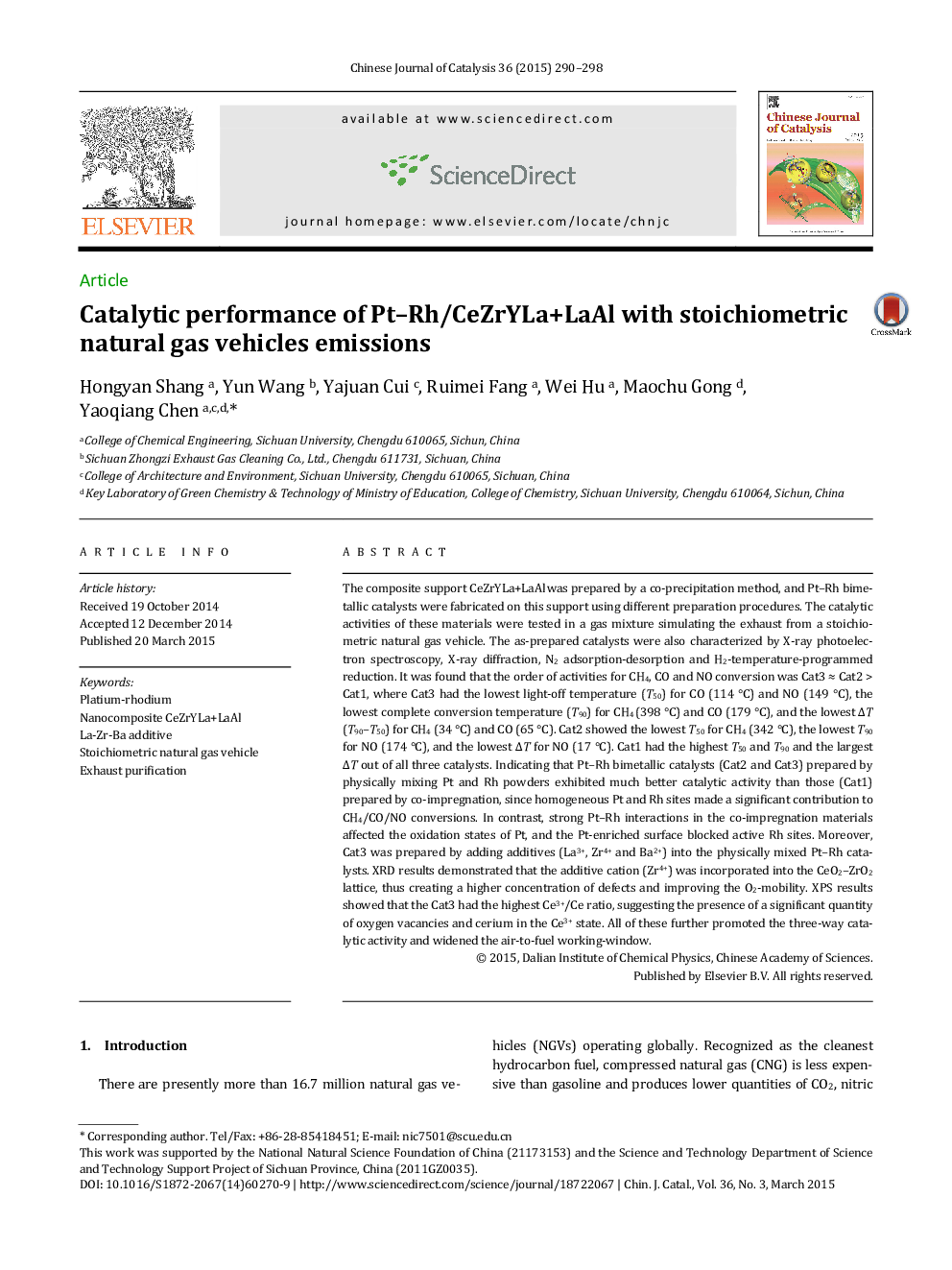| Article ID | Journal | Published Year | Pages | File Type |
|---|---|---|---|---|
| 59931 | Chinese Journal of Catalysis | 2015 | 9 Pages |
The composite support CeZrYLa+LaAl was prepared by a co-precipitation method, and Pt–Rh bimetallic catalysts were fabricated on this support using different preparation procedures. The catalytic activities of these materials were tested in a gas mixture simulating the exhaust from a stoichiometric natural gas vehicle. The as-prepared catalysts were also characterized by X-ray photoelectron spectroscopy, X-ray diffraction, N2 adsorption-desorption and H2-temperature-programmed reduction. It was found that the order of activities for CH4, CO and NO conversion was Cat3 ≈ Cat2 > Cat1, where Cat3 had the lowest light-off temperature (T50) for CO (114 °C) and NO (149 °C), the lowest complete conversion temperature (T90) for CH4 (398 °C) and CO (179 °C), and the lowest ΔT (T90–T50) for CH4 (34 °C) and CO (65 °C). Cat2 showed the lowest T50 for CH4 (342 °C), the lowest T90 for NO (174 °C), and the lowest ΔT for NO (17 °C). Cat1 had the highest T50 and T90 and the largest ΔT out of all three catalysts. Indicating that Pt–Rh bimetallic catalysts (Cat2 and Cat3) prepared by physically mixing Pt and Rh powders exhibited much better catalytic activity than those (Cat1) prepared by co-impregnation, since homogeneous Pt and Rh sites made a significant contribution to CH4/CO/NO conversions. In contrast, strong Pt–Rh interactions in the co-impregnation materials affected the oxidation states of Pt, and the Pt-enriched surface blocked active Rh sites. Moreover, Cat3 was prepared by adding additives (La3+, Zr4+ and Ba2+) into the physically mixed Pt–Rh catalysts. XRD results demonstrated that the additive cation (Zr4+) was incorporated into the CeO2–ZrO2 lattice, thus creating a higher concentration of defects and improving the O2-mobility. XPS results showed that the Cat3 had the highest Ce3+/Ce ratio, suggesting the presence of a significant quantity of oxygen vacancies and cerium in the Ce3+ state. All of these further promoted the three-way catalytic activity and widened the air-to-fuel working-window.
Graphical AbstractPt–Rh catalysts supported on CeZrYLa+LaAl were prepared by three different methods and assessed for application in stoichiometric natural gas vehicle exhaust purification. The additive-promoted, physically mixed Pt–Rh catalysts exhibited excellent catalytic activity and a wide air-to-fuel working-window.Figure optionsDownload full-size imageDownload as PowerPoint slide
